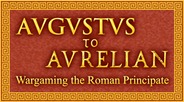For once in my life, I seem to be starting a new project at the turn of the year, so 2013 seems as though it's going to be 'The Year of the Gunfight'.
I'm intending to build a small town, using mainly laser-cut buildings - ones I've got my eye on are from Battleflag, Sarissa Precision (assuming they're compatible, there are items in both the Old West Heroic and American 28mm ranges, which take my fancy), Gamecraft Miniatures (if I can either find a UK supplier, or if their postage rates aren't too extortionate…) and Aetherworks (again, if the shipping doesn't cost me limbs).
As far as figures are concerned, I have acquired a small box containing an assortment of second-hand Wargames Foundry figures from a fellow gamer, and I have bought a few Dixons. I may try a few other manufacturers too, to see if they'll work together, and allow me to have some variety.
Just at the moment, I am contemplating building Battleflag's jail model. The thing giving me pause, is how wood weathers in a more arid climate than ours (okay, let's admit it, just about everywhere that isn't actually submerged has a more arid climate than ours!). Here, untreated wood turns grey, then starts to grow moss and turn green, before becoming so rotten that it falls apart. Photos of 'Old West' ghost towns I've found on the world wide web seem to indicate that wood turns a rich, dark brown, with just a little greying at the edges and ends of boards. But it may be that these old buildings have been treated somehow. More research is needed.
In the meantime, I shall chat a bit more about building my first couple of items from Battleflag. The material used is 'HDF' (High Density Fibreboard) - which seems rather like MDF, but the bits of 'sawdust' it's made from seem smaller, and it appears harder and slightly less absorbent. The way it's cut (burning with a laser) means that the edges are black and have a slightly sooty texture (and it smells burnt!). Also the 'top' of the 'cut' is slightly wider than the bottom - so sometimes, it's an idea to run a smooth file over the edge to square it up. The colour of the material seems a reasonable match for Foundry's F11A Rawhide Shade paint, so it's fairly easy to 'hide' the sooty edge. Running a smooth file over the edge removes some of the soot too, leaving a colour which (if the wood the building is built from is the colour of the HDF) is a reasonable shade for end grain.
Moving on to general stuff about the buildings, and how I think I want my town to look.
Fronts were often painted, and so were doors and window frames. They were meant to stand out - hence the false fronts, but most businesses are 'all front' - lack of paint around back doesn't matter because it isn't very visible from the street. Colours bright - but not 'industrial' bright - so for red use Foundry 37 Terracotta rather than 15 Bright Red. 'High Status' buildings - like hotels - may be painted all over.
So, specifics on the Gunsmith's...
I painted the front red - F60A, dry-brushed highlight of V131/981 Orange Brown, before adding the window-frames, shutters, etc.
Shutters and other trim pale wood, scars on edges touched in with F45B Deep Brown Leather.
Door - F26A, B, highlighted F27B.
Window-frames - white.
Unpainted wood dry-brushed F7B Buff Leather to make it a bit 'softer' and to highlight it slightly.
Sign paper edge touched in with F30B Raw Linen after gluing to the backing but before adding the frame.
Brown roof - bottom third of each shingle in a mix of 1 x F11A, 2 x F11B, 3 x Matt Medium, then highlight bottom edge with neat F11B.
In general I followed the assembly instructions (yes, they come with nicely printed instructions with small colour illustrations, unlike a lot of laser-cut kits), but with a couple of 'adaptations' of my own. Most parts which need painting are easier done before assembly, and a lot of details are easier to add before sticking the whole building together - not least because it's easier to weight things down with a couple of books on a flat surface whilst the glue dries, than to use clamps. On the subject of clamps, pound shops often sell sets of little spring clamps - I bought two sets (16 clamps), which sounds like a lot, but I did use every single one at one stage!
I am really impressed with the way these models go together. Good quality PVA glue, plus a damp cloth (to wipe away excess), and some clamps and weights, and they fly together.
There's very little negative at all - just two, very minor, niggles. I'd have preferred the base to have been slightly bigger - it's only just a mm or two wider than the building. If it had been, say, 5mm, and with rounded corners, it'd be slightly more aesthetically pleasing, and would allow space for a tiny bit of groundwork, which would help 'tie' the model to the table. The 'false front' has no framing behind it and so appears unsupported - a little bit of framing wouldn't be hard to provide in the kit and would add that last finishing touch. I might just add both a wider base and some framing from scrap.
Despite those tiny caveats, I have no hesitation in recommending these models - they're absolutely superb. And, somehow, the thin HDF from which they're made does a better job of simulating the flimsy lumber construction of typical Old West town buildings than anything I've seen cast from resin.
